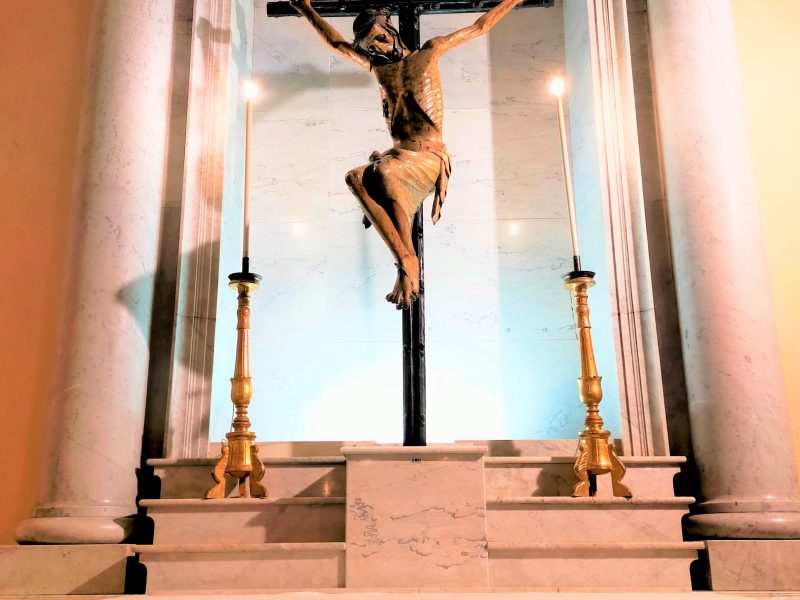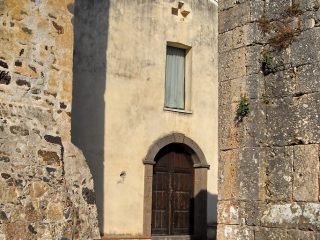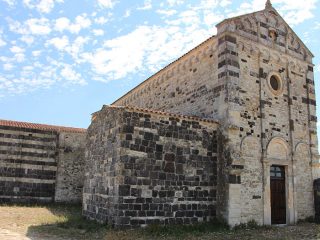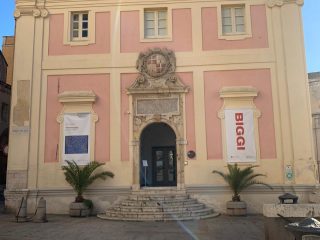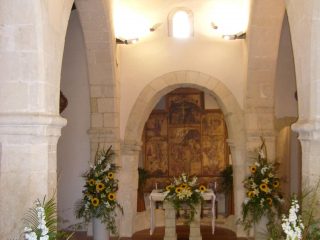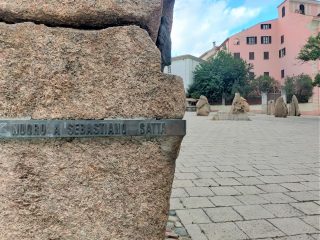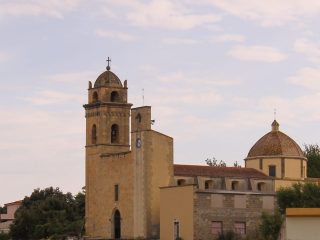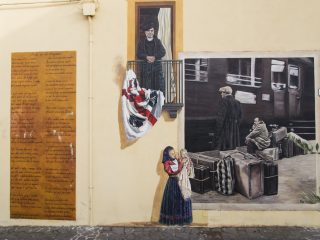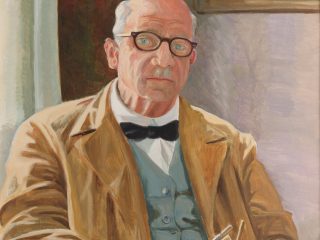The large Crucifix hangs in the church of San Francesco inside a recess in the chapel to the left of the presbytery. The unusual name given to the work refers to Christ’s disciple who took his body down from the cross.
Over time, experts have dated and attributed the work to different schools but it can be presumed to be from the XIV century.
The work falls into the category of Gothic agony crucifixes, a divergence from the Christus Triumphans type; in the agony crucifixes, the body of Jesus Christ is represented as consumed by torment and torture, by now dead or dying on a cross displaying the wood grain and new buds to symbolise the Arbor Vitae.
Nicodemus’ body of Christ does, in fact, appear marked with signs of hunger, with the head hanging to one side, stiff arms and folded legs caused by the weight of the body and with a deep wound in its side and signs of flagellation; an accurate anatomical depiction which deeply affects the onlooker.


